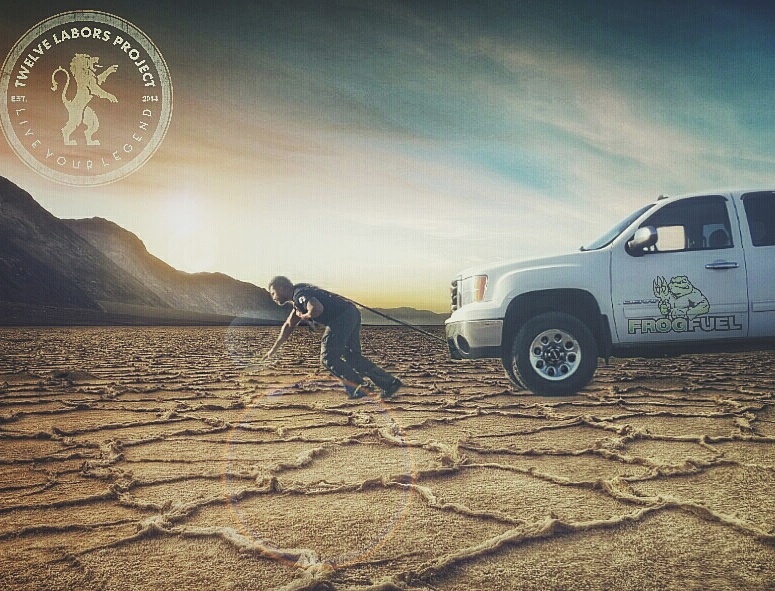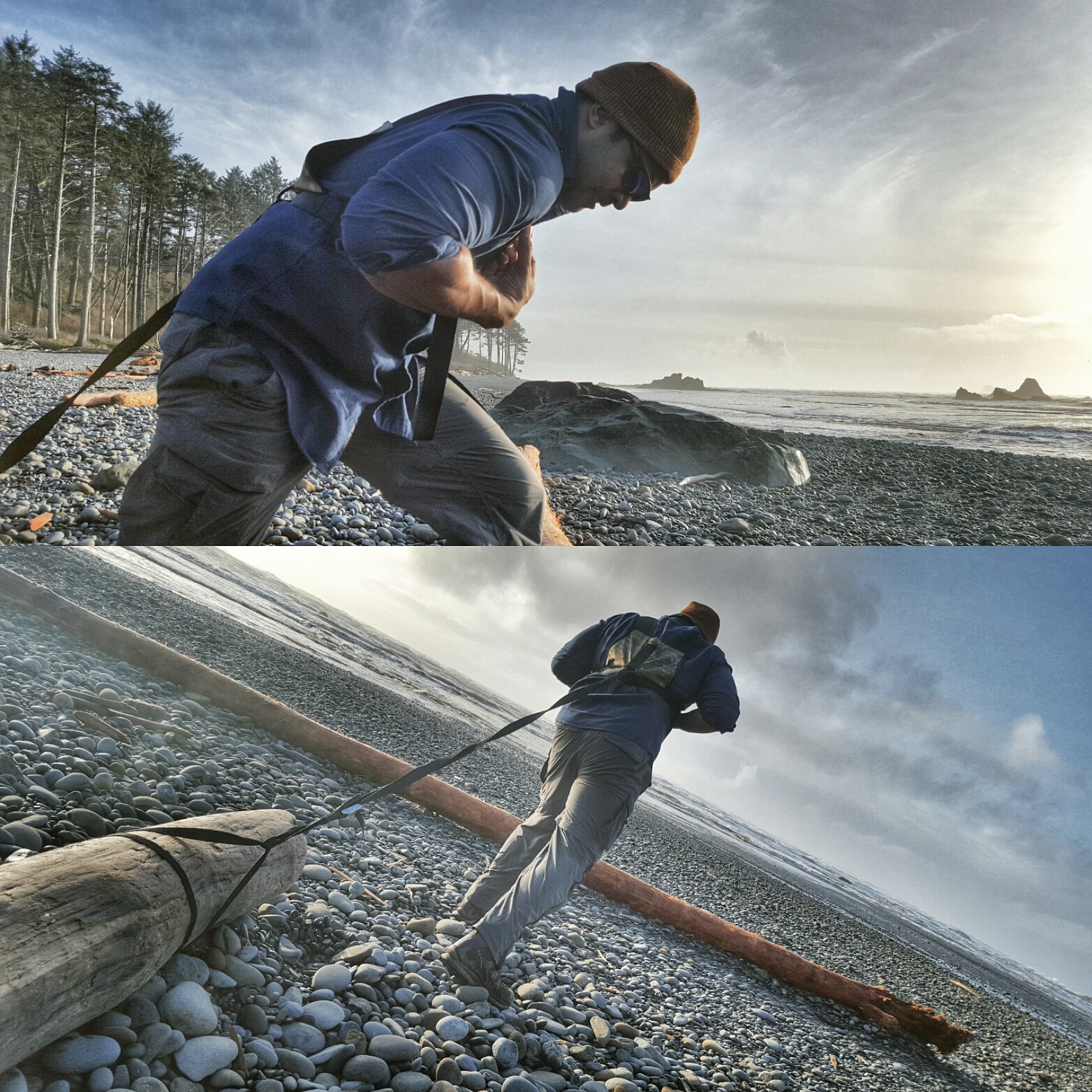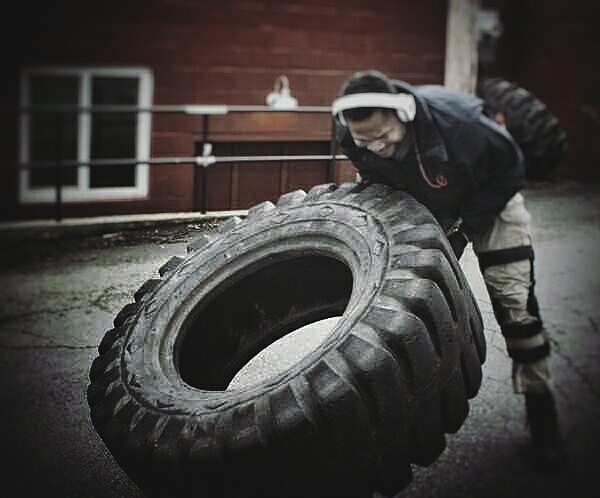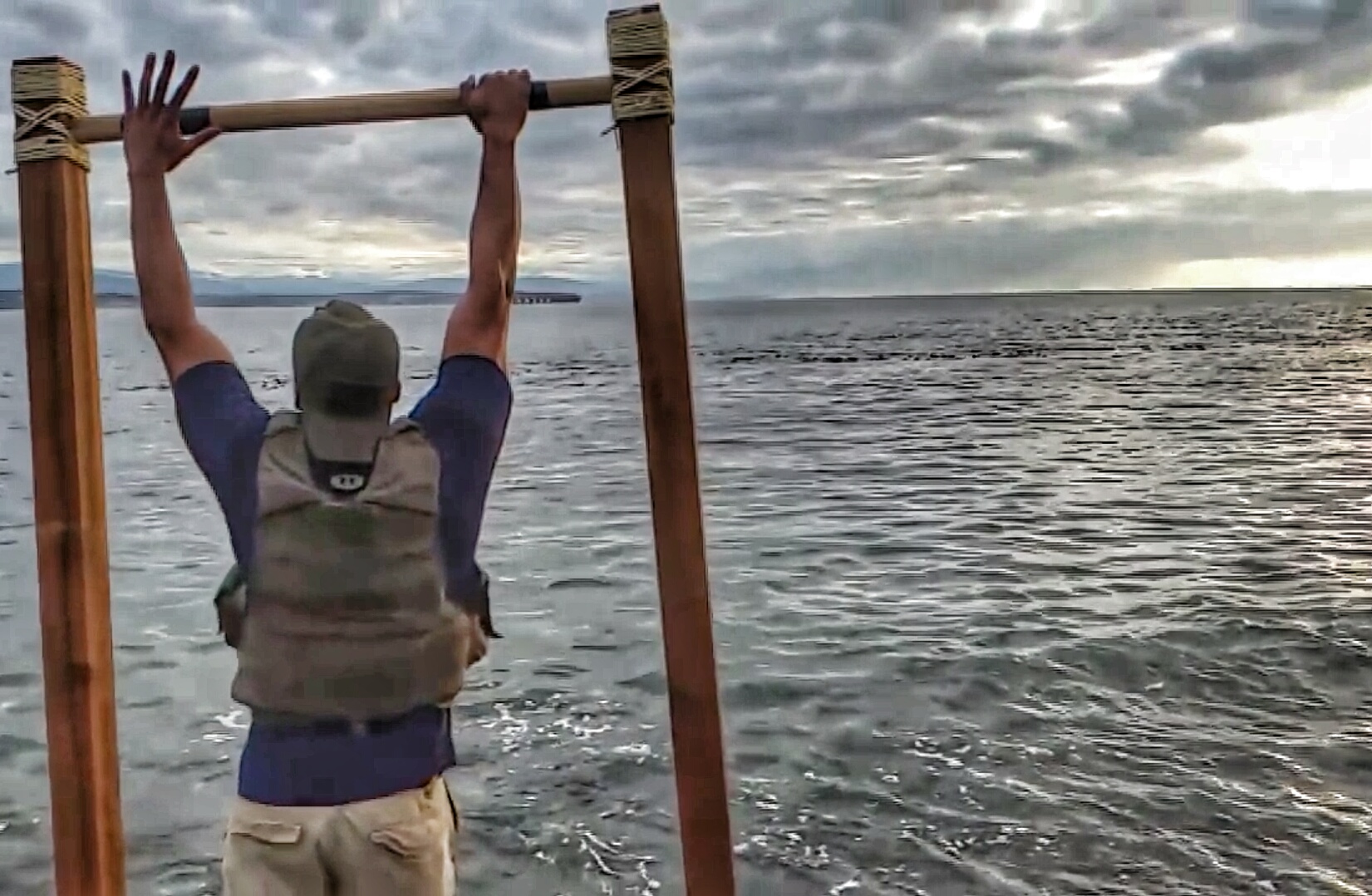
Terry Asher:
We are here with my buddy Michael McCastle, Michael how did you get started as an endurance athlete?
Endurance is synonymous with survival. If you can endure pain and learn to embrace it then you can survive anything. Everyone has their own journey in life—mine revolves around my limits and pushing beyond them.
Being able to endure pain is critical to the success of any great pursuit and even the worst of storms can be overcome by endurance. Like most guys, I enjoy lifting heavy weights and being ripped, but it wasn’t until I began taking on these ultra-endurance challenges for charity that I began to discover who I really was—what Michael McCastle is truly made of.
“I won’t find that out by sitting around watching Netflix.”
The decisions I made in mile 9 of a 13-mile heavy tire flip, or 3000 pull-ups into a 24-hour record attempt has shaped the man I am today in all aspects of my life, and has taught me lessons in failure, humility, and glory. In that respect, being an endurance athlete was less of a choice for me and more of a necessity in fulfilling my life’s purpose and the result of the choices I’ve made for myself.
On the flip side, if you’re reading this, you have survived everything in your life up to this point—that too makes you an “endurance athlete” in your own right.
Terry Asher:
What would you say to someone looking to get into becoming an endurance athlete?
If you want to be an endurance athlete, the first thing you need to do is check your emotions at the door.
Emotions in endurance training will lead you to believe that it’s the “pain” that is stopping you when in reality it your response to the sensation of pain or anything negative for that matter. I’m not saying ignore injury—train smart—but know that if you are honest with yourself, you’ll realize that you aren’t dying and you CAN keep going. You are strong enough. Also, you are what you think. Positive thoughts yield positive results and if you tell yourself something enough, eventually you’ll start to believe it—your belief dictate your behavior.

Terry Asher:
How did you transition from being an endurance athlete to a philanthropist or what came first?
I think they came hand in hand. My endurance events have always been driven by charitable causes. It gives me purpose and helps make sense of the pain associated with the training, preparation, and execution of these challenges.
My decision to do them is partly guided by my faith in humanity’s potential for good and capacity to be even greater. It has always been my vision to live in a world where that potential was exceeded.
I believe that my labors are small gestures toward inspiring that reality.
Terry Asher:
Why did you create the twelve labor projects and what have you been able to accomplish?
Inspired by the mythological 12 labors of Hercules, I created Twelve Labors Project as an umbrella under which I can express my passion for fitness while inspiring people to pursue their own greatness no matter how seemingly impossible it may be. It is driven by a charitable mission. I’ve found, in my experience, that a man can never be too tired or hungry if his cause is greater than his own life and there is no strength that is greater than the strength found in service to those in need.
So far I’ve accomplished 4 out of 12 Labors for various charitable causes that have included a 50k run while wearing a 40lb vest, a world record 24-hour pull-up challenge, a 13 mile 250 lb tire flip, and a 29,029ft rope climb that equaled the height of Mt. Everest.
Terry Asher:
How can the messaging of your brand support his or her health and fitness goals?
I think Twelve Labors Project promotes positivity and health in a person’s mind and body, beginning with the self-belief that anything is possible with the right mindset. It encourages people to step out of their comfort zone and set goals despite the perception of difficulty, fear, doubt or the unknown. Being healthy and fit is a lifestyle that requires commitment, focus, consistency and the right attitude. I think Twelve Labors Project embodies all of those things.

Terry Asher:
Can you give us a brief description of your crazy accomplishment of 5,804 pull-ups in 24 hours? What was going through your head during that challenge?
Last September I broke the Guinness World Record for the most pull-ups completed in a 24 hour period—while wearing a 30lb pack that represented the physical and mental burden of our nation’s wounded veterans.
I’ll put it this way…I’m 6’1 and 220lbs—lifting just my bodyweight that many times was equivalent to pulling up 8 space shuttles in weight. With the extra weight thrown on top of that, needless to say, it was one of the most painful things I have ever endured.
Honestly, during that challenge and others like it, my mind has to go to a dark place. You have to block everything out and focus only on the present moment. In that moment, there is no past, future or end goal. There was only one thing in my mind on repeat and that was “one more rep”.
Terry Asher:
I’m sure everyone here at gymjunkies is wondering the obviously question what is your typical workout routine?
There really is no “routine” in my training. I’m still active in the Navy and I’m also pursuing my masters so my workouts fit around my work and school schedule. With that said, I firmly believe that there are 24 hours in a day so if I miss a training session, I have only myself to blame.
There are no excuses, just time and opportunity, even if that means missing an hour or two of sleep or bringing my books with me to the gym and reading a chapter between workouts. With that said, if I’m training for an event, I aim to train twice a day 5-6 days a week and it usually consists of endurance training in the morning where I’ll go for a long swim in the pool or ocean anywhere from 2-3 miles or a long run that can range between 8 to 12 miles.
I do some kind of weight training in the evenings and it typically consists of a high volume of heavy, compound lifts like Romanian Deadlifts, Squats, and Overhead Presses and weighted pull-ups followed by a series of calisthenics or event specific movements that I usually do to failure toward the end. When I was training for the pull-up challenge, I did up to 1500 pull-ups at the end of most sessions.
I also train core every day for 15-20 minutes in some shape or form. When I’m not in the weight room, I’m outdoors. Since many of my events put me among the elements, the nastier it is outside, the better. It forces me to focus on the things I can control which is not the weather.
It reminds me to always be stronger than my environment. Living in the Pacific Northwest, I take advantage of the nearby mountains and beaches where I drag and flip heavy, water-laden logs up and down the beach or climb summits with my weighted ruck sack.

Terry Asher:
What did your diet consist of when you are training?
I take in 4500-6000 calories per day, depending on what I have planned to do. It consists of a lot lean protein, mostly from fish and other whole food sources of veggies, carbs and essential fats. I eat clean for the most part but in no way do I restrict myself from enjoying foods I like when I feel like eating them. I’m looking at you, gummy bears.
Terry Asher:
Tell us about your new project that will help bring more awareness to veteran suicide:
On May 22nd, I will go into Death Valley and pull a 2.2-ton truck 22 miles to raise awareness for Veteran Suicide. The number 22 is important because on average, 22 veterans commit suicide each and every day. Death Valley represents the mind of those afflicted by PTSD and depression.
The feat represents hope for recovery. Our nation’s veterans are facing a silent enemy in an invisible war—one in which they are not adequately equipped to fight. This calls for a national conversation that I hope to draw awareness to through this event.
Terry Asher:
Anything you would like to add for us here at Gymjunkies?
For my next labor, I have partnered with several of the country’s leading veteran suicide prevention and advocacy organizations with the goal of getting 10,000 people to pledge $1 for every mile of the truck pull. 100% of funds raised will go to programs and initiatives specifically designed to combat veteran suicide and mitigate the disturbing trend of 22 per day. If you would like to contribute to the fight, visit www.anython.com/22
-Terry Asher
P.S Let’s help Michael McCastle raise awareness to veteran suicide prevention, comment below for your support!
Terry
Latest posts by Terry (see all)
- How Important Are Net Carbs For Building Huge Muscle? - Apr 28, 2017
- The Matt Damon Workout Explained - Apr 27, 2017
- Watercress – Benefits And The Best Way To Consume It - Apr 26, 2017










This is a great interview… I love how he gives back with his events.
Thanks for sharing Terry 🙂
Adorna
I agree Adorna, it’s a great way to help people 🙂
Thanks for stopping by!
Terry